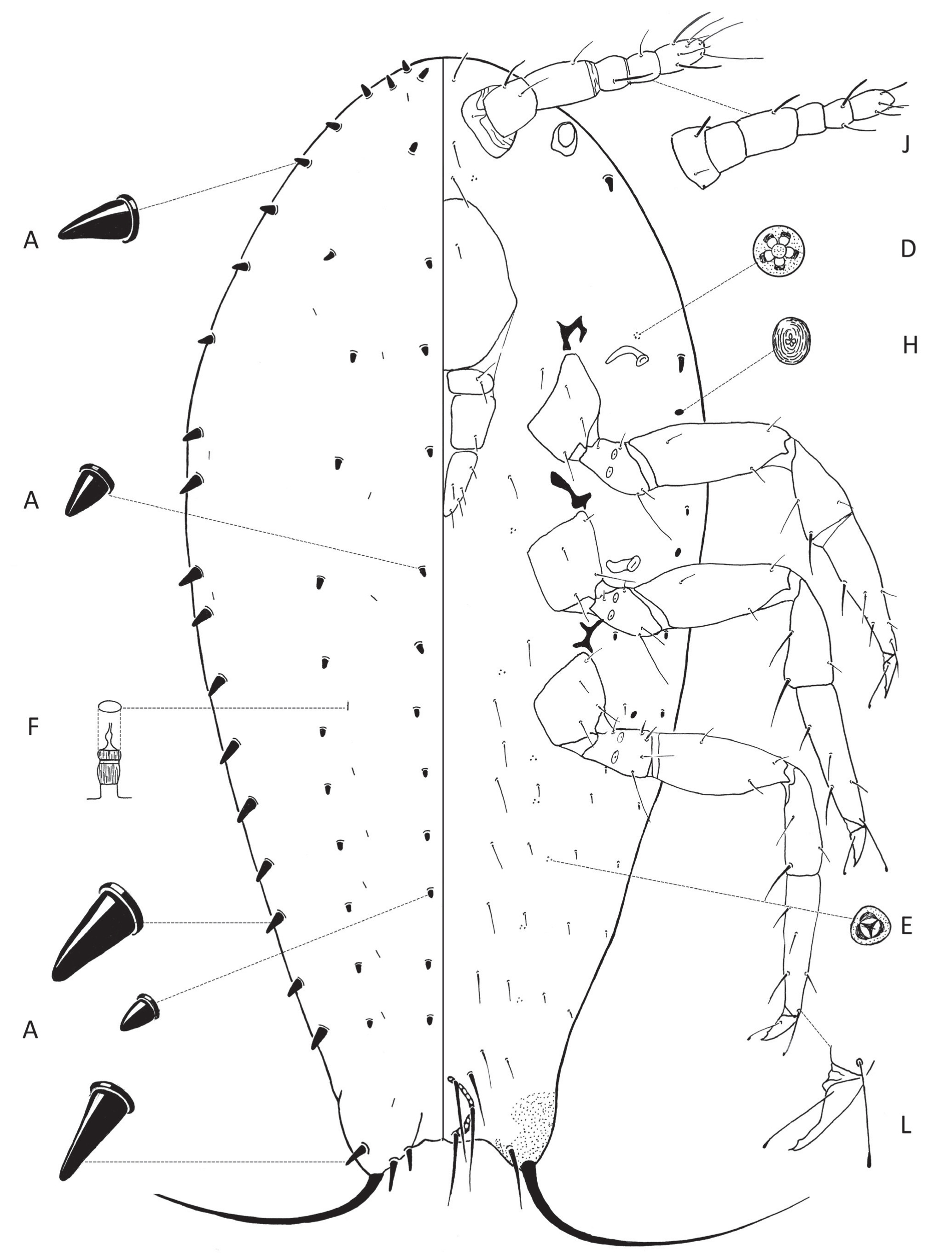Valid Names Results
Acanthococcus arenosus (Cockerell, 1897) (Eriococcidae: Acanthococcus)Nomenclatural History
- Eriococcus arenosus Cockerell 1897w: 514. Type data: UNITED STATES: New Mexico, 16/04/1897, by Cockerell. Lectotype, female, by subsequent designation (Miller1991,334-337). Type depository: Washington: United States National Entomological Collection, U.S. National Museum of Natural History, District of Columbia, USA; accepted valid name
- Acanthococcus arenosus (Cockerell, 1897); Miller 1991: 334-337. change of combination Illustr.
Common Names
- sand eriococcin MillerMi1992
Ecological Associates
Hosts:
Families: 4 | Genera: 5
- Amaranthaceae
- Atriplex | Miller1991
- Atriplex canescens | Miller1991
- Bassia hyssopifolia | Miller1991
- Asteraceae
- Gutierrezia | Miller1991
- Fabaceae
- Psoralea lanceolata | Miller1991 | (= Psoralea micrantha)
- Sarcobataceae
- Sarcobatus vermiculatus | Miller1991
Geographic Distribution
Countries: 1
- United States
- Arizona | Miller1991
- Nevada | Miller1991
- New Mexico | Miller1991
- Oregon | Miller1991
- Texas | Miller1991
- Utah | Miller1991
Keys
- MillerSt2022: pp.12 ( First instar ) [Acanthococcus species]
- MillerMi1992: pp.6 ( Adult (F) ) [Acanthococcus species of the western United States] Key as: Acanthococcus arenosus
- Miller1991: pp.334 ( Adult (F) ) [Acanthococcus species that infest Atriplex] Key as: Acanthococcus arenosus
- Ferris1955a: pp.95-97 ( Adult (F) ) [North American species of Eriococcus]
Remarks
- Systematics: The first-instar nymph of Ac. arenosus is most similar to the first-instar nymph of Ac. coccineus in having the dorsal medial and mediolateral enlarged setae noticeably smaller than the lateral enlarged setae, the predominant multilocular pores with three loculi, and the ventral lateral enlarged setae increase in size anteriorly. The species differ as follows (character states in brackets are of Ac. arenosus): dorsomedial and mediolateral enlarged setae cylindrical (predominantly conical); each femur with five setae (each femur with four setae). (Miller & Stocks, 2022)
- Structure: Adult female elongate to oval. Body varies from gray to light purple. Smooth, heavy, white ovisac may be intermixed with grains of sand (Miller, 1991).
- General Remarks: Descriptions and illustrations given by Miller (1991) and Ferris (1955a). Description and illusstration of first instar nymph in Miller & Stocks, 2022.
Illustrations
Citations
- Cocker1897w: description, distribution, host, taxonomy, 514
- Cocker1899a: taxonomy, 391
- Cocker1900i: taxonomy, 594-595
- Cocker1905b: taxonomy, 192
- Fernal1903b: taxonomy, 71
- Ferris1955a: description, distribution, host, illustration, taxonomy, 97, 104
- Gill1993: distribution, 155
- Hoy1963: catalog, distribution, host, taxonomy, 72
- Kozar2009: distribution, taxonomy, 97
- MacGil1921: distribution, host, taxonomy, 145
- McDani1959: taxonomy, 137
- Miller1991: description, distribution, host, illustration, taxonomy, 334-337
- Miller2005: distribution, 491
- MillerGi2000: catalog, description, distribution, host, taxonomy, 133-134
- MillerMi1992: distribution, host, taxonomy, 6, 14
- MillerSt2022: description, illustration, key, nymph, 12, 13-14
- PooleGe1997: distribution, 354
- StoetzMi1979: catalog, taxonomy, 6
- Willia1985a: catalog, distribution, host, 217
- Willia2017a: catalog, list of species, 235



